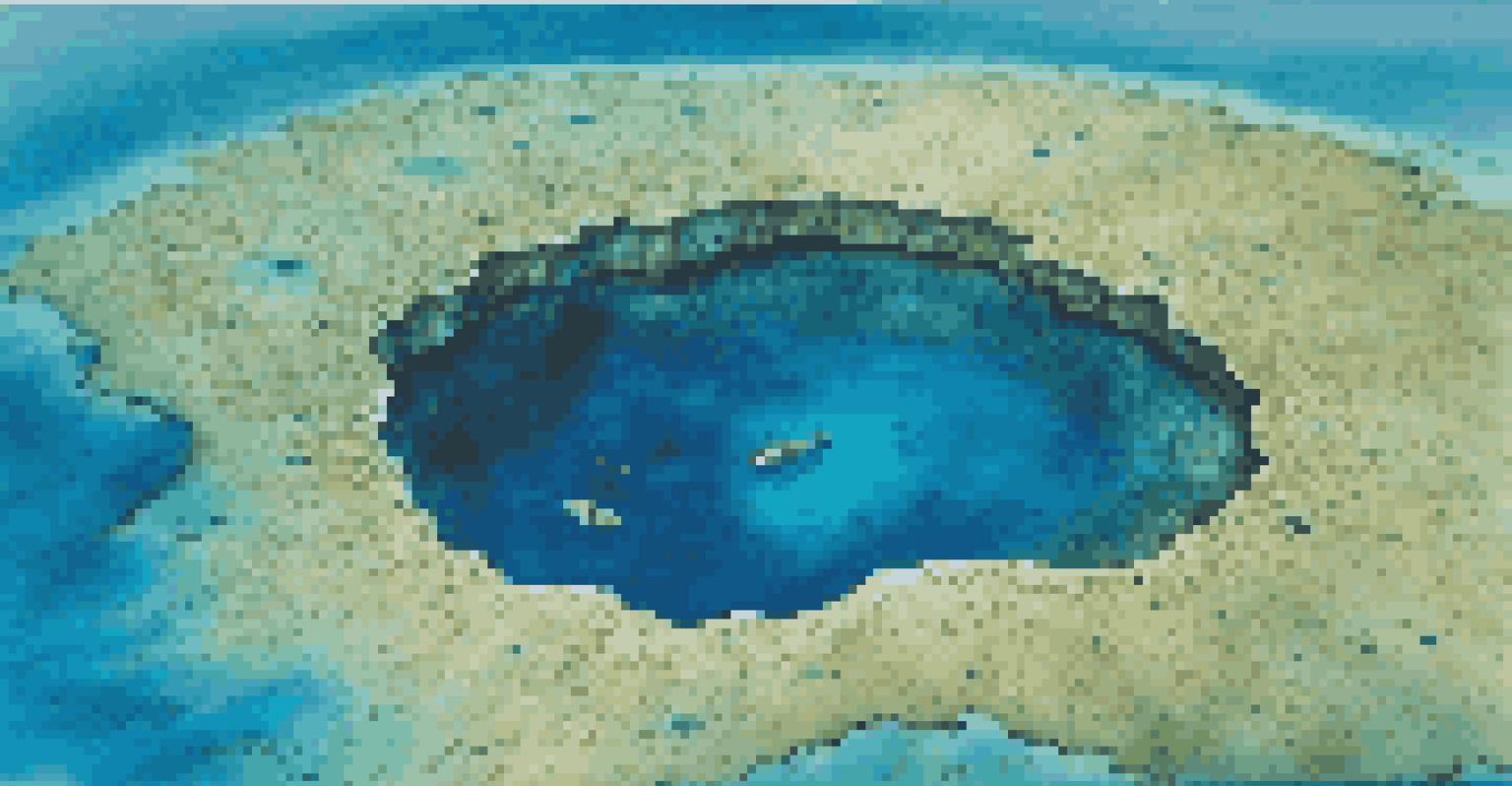Exploring Underwater Caves: A Diver's Ultimate Challenge

The Allure of Underwater Caves for Adventurous Divers
Underwater caves present a unique challenge that many divers crave. The thrill of venturing into the unknown, surrounded by stunning geological formations, is irresistible. These submerged labyrinths offer a blend of adventure and exploration that you won’t find in a typical dive site.
The sea, once it casts its spell, holds one in its net of wonder forever.
Moreover, the serenity found in these secluded environments can be captivating. As you glide through crystal-clear waters, the silence is only broken by the sound of your own breathing, creating a meditative experience. This combination of adrenaline and tranquility makes underwater caves an enticing destination for divers.
The visual spectacle of underwater caves is another reason they attract divers. Stalactites and stalagmites, formed over thousands of years, create a breathtaking backdrop. It's like exploring an alien world where nature has sculpted its own art.
Essential Skills and Training for Cave Diving
Cave diving is not for the casual diver; it demands specialized skills and training. Basic scuba certification is just the starting point—divers must undergo further training to navigate the complexities of underwater caves safely. This includes learning about cave systems, proper buoyancy control, and emergency procedures.

One key aspect of cave diving training is the importance of teamwork. Divers often work in pairs or groups to ensure safety, sharing responsibilities like navigation and monitoring each other’s air supply. This collaborative approach is crucial, as it can mean the difference between a safe adventure and a dangerous situation.
Cave Diving Requires Specialized Skills
Divers need advanced training and teamwork to safely navigate the complexities of underwater caves.
Additionally, mastering equipment usage is vital. Cave divers often employ specialized gear, such as dual tanks and reels, to ensure they have enough air and can find their way back. Familiarity with this equipment can significantly boost a diver's confidence and effectiveness in underwater caves.
Understanding the Unique Environment of Underwater Caves
Underwater caves are distinct ecosystems, often home to unique flora and fauna. These environments can range from freshwater springs to saltwater systems, each with its own set of life forms. Understanding these ecosystems is not only fascinating but also essential for divers to respect and protect them.
In every outthrust headland, in every curving bay, in every grain of sand there is the story of the earth.
The water in these caves can vary in temperature and clarity, presenting additional challenges. Some caves may have strong currents or low visibility, which can be disorienting. Being aware of these factors helps divers prepare mentally and physically for the dive.
Moreover, the geology of underwater caves is equally intriguing. Formations such as flowstone, drapery, and ancient sediment can tell a story of Earth’s history. Learning about these geological features enhances the diving experience, adding an educational layer to the adventure.
Safety Precautions Every Cave Diver Should Know
Safety is paramount in cave diving, and divers must adhere to strict guidelines. Before diving, a thorough risk assessment of the cave is essential, including potential hazards like loose rocks or sudden changes in water conditions. Divers should always have a plan in place, including entry and exit points.
Using proper equipment is another critical safety measure. Divers should ensure their gear is in excellent condition and suitable for cave diving. Regularly checking equipment can prevent malfunctions that might lead to dangerous situations underwater.
Environmental Impact of Diving
Cave diving can harm delicate ecosystems, highlighting the importance of responsible practices among divers.
Additionally, divers must always communicate effectively with their dive team. Establishing clear signals and protocols can greatly enhance safety during dives. This teamwork not only fosters a sense of security but also enriches the overall experience.
Exploring Famous Underwater Caves Around the World
There are numerous stunning underwater caves across the globe that attract divers from all walks of life. One of the most famous is the Great Blue Hole in Belize, a massive sinkhole known for its deep blue waters and unique marine life. Divers flock here to experience its beauty and the thrill of exploring such a vast underwater cavern.
Another remarkable site is the cenotes of Mexico’s Yucatán Peninsula. These natural sinkholes offer a unique diving experience, combining fresh and saltwater ecosystems. The stunning visibility and intricate cave systems make it a favorite for divers seeking adventure and beauty.
For those looking for something different, the Blue Grotto in Italy is a must-visit. Known for its ethereal blue light, this cave offers a magical atmosphere. Divers can explore its underwater chambers while basking in the enchanting glow of sunlight filtering through the entrance.
The Environmental Impact of Cave Diving
As thrilling as cave diving is, it’s crucial to recognize its potential environmental impact. Divers can unintentionally harm delicate ecosystems by disturbing sediment or touching fragile formations. It’s essential to educate divers on responsible practices to minimize their footprint.
Promoting conservation efforts is vital for preserving these unique underwater environments. Many organizations work to protect underwater caves and their ecosystems, advocating for responsible diving practices. Joining these initiatives not only helps the environment but also fosters a community of like-minded divers.
Future of Cave Exploration is Bright
Advancements in technology and increased awareness of conservation will enhance underwater cave exploration while protecting these environments.
Moreover, understanding the balance between adventure and preservation can lead to more sustainable diving experiences. By being mindful of their actions, divers can enjoy the beauty of underwater caves while ensuring they remain intact for future generations.
The Future of Underwater Cave Exploration
The future of underwater cave exploration is bright, thanks to advancements in technology and diving techniques. Innovative equipment, such as underwater drones and advanced rebreathers, allows divers to explore deeper and more complex cave systems safely. These tools can significantly enhance the diving experience by providing better navigation and communication.
Additionally, there is a growing interest in underwater cave research, leading to new discoveries and insights into these mysterious environments. Collaborative efforts between divers and scientists are paving the way for more comprehensive studies, helping us understand the ecological significance of these caves.

As awareness of environmental conservation increases, there’s hope that underwater caves will receive the protection they deserve. This shift toward sustainability will ensure that future divers can experience the thrill of exploring these incredible underwater worlds while preserving their beauty for years to come.